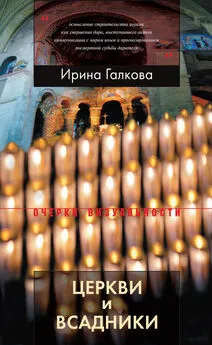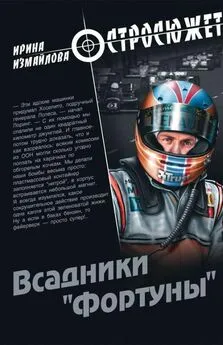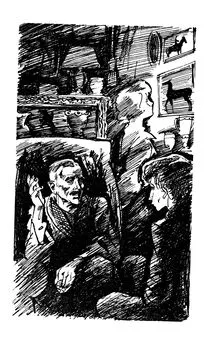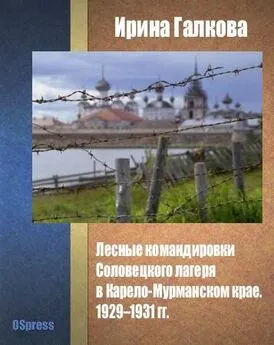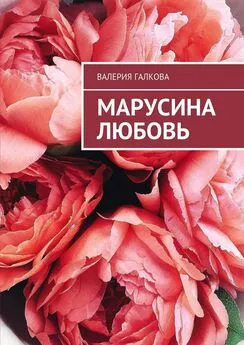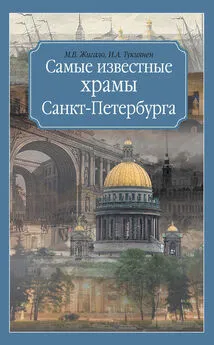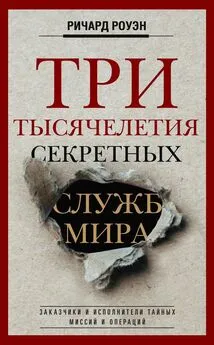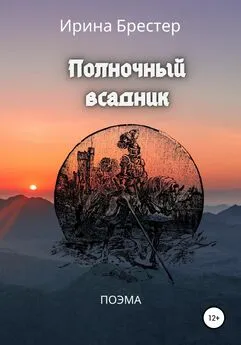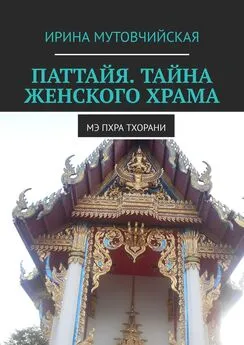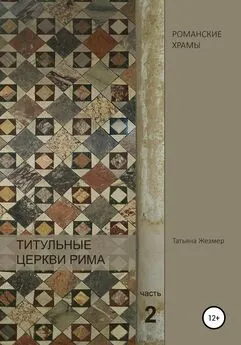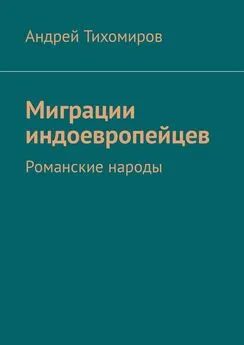Ирина Галкова - Церкви и всадники. Романские храмы Пуату и их заказчики
- Название:Церкви и всадники. Романские храмы Пуату и их заказчики
- Автор:
- Жанр:
- Издательство:Литагент «НЛО»f0e10de7-81db-11e4-b821-0025905a0812
- Год:2015
- Город:Москва
- ISBN:978-5-4448-0398-1
- Рейтинг:
- Избранное:Добавить в избранное
-
Отзывы:
-
Ваша оценка:
Ирина Галкова - Церкви и всадники. Романские храмы Пуату и их заказчики краткое содержание
И.Г. Галкова – искусствовед, медиевист, кандидат исторических наук (Институт всеобщей истории РАН). Ее книга представляет собой попытку реконструировать ситуацию создания двух романских церквей в регионе Пуату – Сен-Пьер в Ольнэ и Сент-Илер в Меле. Два конкретных случая рассмотрены на фоне общего анализа интенций и действий заказчиков церквей XII века, запечатленных в текстах дарственных грамот, хроник, писем, надписей и впервые систематически изученных в таком ключе. В целом исследование выявляет процесс становления в европейской культуре феномена родовой церкви, которая в эпоху позднего Средневековья и раннего Нового времени станет практически непременным атрибутом репрезентации рода для высших кругов аристократии.
Церкви и всадники. Романские храмы Пуату и их заказчики - читать онлайн бесплатно ознакомительный отрывок
Интервал:
Закладка:
Gerson P. L. Suger as Iconographer: The Central Portal of the West Façade of Saint-Denis // Abbot Suger and Saint-Denis. A symposium / Ed. P. L. Gerson. NY, 1987.
Hajdu R. Castels, Castellans and the Structure of Politics in Poitou, 1152–1271 // Journal of Medieval history. № 4, 1978. P. 27–53.
Idem. Family and Feudal Ties in Poitou, 1100–1300 // Journal of Interdisciplinary Studies. 1977. № 8. P. 117–139.
Heitz C. Recherches sur les rapports entre architecture et liturgie à l’époque carolingienne. P., 1963.
Idem. Rôle de l’ église-porche dans la formation des façades occidentales de nos églises romanes // Cahiers de civilisation médiévale. Poitiers, 1991. An. 34. P. 36–78.
Héliot P. Observations sur les façades décorées d’arcades aveugles dans les églises romanes // BSAO. Poitiers, 1958. P. 367–458.
Higounet Ch. Le Groupe aristocratique en Aquitaine et en Gascogne, fin Xe – debut XIIe siècle // Les structures sociales de l’ Aquitaine, du Languedoc et de l'Espagne au prémier âge féodal. P., 1969. P. 221–237.
History and Images. Towards a new Iconology / Ed. A. Bolvig, Ph. Lindely. Turnhout, Brepols, 2003.
Houlet J. Les combats des vertus et des vices: la Psychomachie dans l’art. P., 1969.
Hubert J. Le caractére et le but du décor sculpté des églises d’aprés les clercs du Moyen âge // Annales du Midi. T. 75. № 64. 1963. P. 395–404.
Iconography at the crossroads / Ed. B. Cassidy. Princeton, 1990.
Index exemplorum. A Handbook of Medieval Religious Tales / Ed. F.C. Tubach. Helsinki, 1969.
Iogna-Prat D. Ordonner et exclure. Cluny et société chrétienne face à l’hérésie, au judaïsme et à l’islam. 1000–1150. P., 1998.
Kenaan-Kedar N. L’ évêque, le comte et le carpentier: à propos de deux monuments commemoratifs du XIIIe siècle a Nôtre Dame du Puy // Cahiers de civilisation médiévale. An. 33, 1990. P. 205–217.
Kent D.V. Cosimo dei Medici and the Florentine Renaissance: the patron’s oeuvre. Yale University Press, 2000.
Kingsley Porter A. Romanesque sculpture of the Pilgrimage Roads. Boston, 1923.
Kurmann P., Kurmann-Schwarz B. Französische Bischöfe als Auftraggeber und Stifter von Glasmalereien. Das Kunstwerk als Geschihtsquelle // Zeitschrift für Kunstgeschichte. Berlin, 1997. Bd. 60. № 4. S. 429–449.
Lacroix R.P.B. Travailleurs manuels du Moyen âge roman: leur spiritualité // Melanges offerts à René Crozet à l'occasion de son 70e anniversaire. Poitiers, 1966. T. I. P. 523–531.
L’artiste et le commanditaire aux derniers siècles du Moyen âge (XIII–XIV siècles) / Éd. Fabienne Joubert. P., 2001.
Le Bras G. L’ activité canonique à Poitiers pendant la réforme gregorienne (1049–1099) // Mélanges offerts à René Crozet à l’ occasion de son 70e anniversaire. Poitiers, 1966. T.I. P. 237–241.
Le Goff J., Schmitt J. – Cl. Dictionnare raisonné d’Occident médiéval. P., 1999.
Le Roux H. Figures équestres et personnages du nom Constantin au XI et XII siècles // BSAO. Poitiers, 1974. IV sér. P. 379–394.
Idem. Les énigmatiques cavaliers romans, St. Jaques ou Constantin? // l’Archeologie. № 20. 1977. P. 75–78.
Idem. Les origines de Saint-Hilaire de Melle. Contribution à l’ étude des chemins de Saint-Jaques et à celle de l'influence clunisienne en Haut-Poitou // BSAO. Poitiers, 1969. IV sér. P. 119–138.
Idem. Problèmes d’archéologie romane. Existe-t-il une «école d’Aulnay»? // Bulletin de la Société historique et scientifique des Deux-Sèvres. II série. T. XVI. 1983. P. 145–153.
Leclercq H. Cavaliers au portail des églises // Dictionnaire d’archèologie chrétienne et de liturgie / Éd. F. Cabrol. 15 vols. P., 1907–1953. Vol. 2. Col. 2690–2700.
Lejeune R., Stiénnon J. La légende de Roland dans l’art du Moyen âge. Bruxelles, 1966. T. 1. P. 29–42.
Lemarigner J. – F. Political and monastic structures in France at the end of X – beginning of XI centuries // Lordship and Community in Medieval Europe. N.Y., 1975. P. 100–128.
Lethaby W.R. The Part of Suger in the Creation of Mediaeval Iconography // The Burlington Magazine. Lnd., 1914. Vol. 25. № 137. P. 206–211.
Lewis A.R. The development of Southern French and Catalan society, 718–1050. Austin, 1965.
Lusiardi R. Stiftung und städtische Gesellschaft. Berlin, 2000.
Magnou-Nortier E. La société laïque et l’église dans la province ecclésiastique de Narbonne de la fin du VIIIe à la fin du XIe siècle. Toulouse, 1974.
Mâle E. L’art réligieux du XIIe siècle en France. Étude sur les origines de l’iconographie du Moyen âge. P., 1947 (5e édition).
Idem. L’art réligieux du XIIIe siècle en France. Étude sur l’iconographie du Moyen âge et sur ses sources d’inspiration. P., 1948.
Idem. La part de Suger dans la création de l’ iconographie du Moyen âge // Le Moyen âge. 1914–1915. № 35. P. 91–349.
Muratova X. «Vir quidem fallax et falsidicus, sed artifex praeelectus». Remarques sur l’image sociale et littéraire de l’artiste au Moyen âge // Artistes, artisans et production artistique au Moyen âge / Éd. Xavier Barral I Altet. Vol. 1. P., 1986. P. 53–72.
Orlowski T.H. La façade romane dans l’ Ouest de la France // Cahiers de civilisation médiévale. Poitiers, 1991. An. 34. P. 367–379.
Ortiz M., Gensbeitel Ch. Les églises romanes de Poitou-Charentes. Condé-sur-Noireau, 1997.
Oursel R. Haut-Poitou roman. P., 1975.
Painter S. Castellans of the Plain of the Poitou in the Eleventh and Twelfth Centuries / Ed. Fr. A. Cazel // Feudalism and Liberty. Baltimore, 1961. P. 17–40.
Idem. The lords of Lusignan in the XI and XII centuries // Speculum. № 32. 1957. P. 27–47.
Palazzo E. Liturgie et société au Moyen âge. P., 2000.
Pon G. L’apparition des chanoines règuliers en Poitou // BSAO. IV sér. № 13. Poitiers, 1975. P. 55–70.
Pouzet Ph. L’ anglais Jean dit Bellesmains (1122–1204?), évêque de Poitiers, puis archévêque de Lyon (1162–1182 – 1182–1193). Lyon, 1927.
Richard A. Histoire des comtes de Poitou. P., 1903.
Roger P.A. La noblesse de France aux croisades. P., Bruxelles, 1845.
Rosenwein B. To Be the Neighbor of Saint Peter: the Social Meaning of Cluny’s Property, 909–1049. Lnd., 1989.
Rupin E. L’abbaye et les cloîtres de Moissac. P., 1897; Treignac, 1981.
Rupprecht B. Romanische Skulptur in Frankreich. München, 1975.
Sandron D . La cathédrale de Laon, la volonté du clergé, la liberté des architectes // L’artiste et le commanditaire aux derniers siécles du Moyen âge (XIII–XIV siécles) / Éd. Fabienne Joubert. P., 2001. P. 271–288.
Sanfacon R. Defrichements, peuplement et institutions seigneuriales en Haut-Poitou du Xe au XIIIe siècle. Quebec, 1967.
Sauer Ch. Fundatio und memoria: Stifter und Klostergründer im Bild: 1100 bis 1350. Göttingen, 1993.
Sauerlander W. Façade ou façades romanes? // Cahiers de civilisation médiévale. Poitiers, 1991. An. 34. P. 393–401.
Schleif C. Donatio et memoria: Stifter, Stiftungen und Motivationen an Beispielen aus der Lorenzkirche in Nürnberg. München, 1990.
Schmid K. Stiftungen für das Seelenheil // Gedächtnis, das Gemeinschaft stiftet. München, Zürich, 1985. S. 51–73.
Schmid W. Stifter und Auftraggeber im spätmittelalterlichen Köln. Köln, 1994.
Seidel L. Constantine and Charlemagne // Gesta. Essays in Honor of Sumner McKnight Crosby. N.Y., 1976. Vol. 15. № 1/2. P. 237–239.
Eadem. Early Medieval Images of the Horseman Re-viewed // The Study of Chivalry. Resources and approaches. Kalamazoo, 1989. P. 373–400.
Eadem. Holy Warriors: the Romanesque Rider and the Fight against Islam // The Holy War / Ed. Thomas Patrick Murphy. Columbus, 1976. P. 33–54.
Eadem. Legends in Limestone. Chicago, Lnd., 1996.
Eadem. Songs of Glory: the Romanesque Façades of Aquitaine. Chicago, Lnd., 1981.
Southern R.W. The Making of the Middle Ages. Lnd., 1953.
Stiennon J. Hezelon de Liege, architecte de Cluny III // Mélanges offerts à René Crozet à l’ occasion de son 70e anniversaire. Poitiers, 1966. T. I. P. 345–359.
Stiftungen und Stiftungswirklichkeit / Hg. v. M. Borgolte. Berlin, 2000.
Suger en question / Éd. R. Große. P., München, 2004.
Tcherikover A. High Romanesque Sculpture in the Duchy of Aquitaine, C. 1090–1140. Oxford, 1997.
The Dictionary of Art / Ed. Jane Turner. N.Y., 1996.
Thomas P. Le droit de propriété des laïques sur les églises et le patronage laïque au Moyen âge. P., 1906.
Tonnelier P. Aulnay de Saintonge. Saintes, 1977.
Treffort C. La mémoire du duc dans un écrin de pierre. Le tombeau du duc d’ Aquitaine Guy Geoffroy Guillaume à Saint-Jean-de-Montierneuf à Poitiers // Cahiers de civilisation médiévale. Vol. 47. Fasc. 3. 2004. P. 249–270.
Treffort C. Le comte de Poitiers, duc d’Aquitaine, et l’église aux alentours de l’an mil (970–1030) // Cahiers de civilisation médiévale. Poitiers, 2000. An. 43. P. 395–445.
Verdon J. La chronique de Saint-Maixent et l’histoire du Poitou au IXe – XIIe siècles // BSAO. Poitiers, 1976. IV sér. P. 437–472.
Werner F. Aulnay de Saintonge und die romanische Skulptur in Westfrankreich. Worms, 1979.
Wirth J. L’ image à l’ époque romane. P., 1999.
Wood S. The Proprietary Church in the Medieval West. Oxford, 2006.
Wulf Ch. Bernward von Hildesheim, ein Bischof auf dem Weg zur Heiligkeit // Concilium medii aevi. 2008. P. 11–19 (http://cma.gbv.de/dr, cma,011,2008,a,01.pdf)
Баше Ж. Средневековые изображения и социальная история: новые возможности иконографии / Пер. с франц. И.Г. Галковой // Одиссей. Человек в истории. М., 2005. С. 152–190.
Бельтинг Х. Образ и культ. М., 2002.
Галкова И.Г. «Аквитанский всадник» и аквитанские аристократы: к вопросу о светском заказе церквей в XII в. // Одиссей. Человек в истории. М., 2008. С. 275–301.
Она же. Ги Лобришон. Элоиза. Любовь и знание. Париж: Галлимар, 2005. Guy Lobrichon. Héloïse. L’amour et le savoir. P.: Gallimard, 2005 (рецензия) // Средние века. № 68(3). М., 2007. С. 139–144.
Она же. Изображения как исторический источник // Новое прочтение источника: история Древнего мира, Средних веков, Нового и Новейшего времени. М., 2004. С. 20–30.
Она же. Иконография портала Сен-Жиль в Аржантон-Шато: воплощенная память о мистическом опыте // Антропология культуры. Вып. 4. М., 2008. С. 135–151.
Читать дальшеИнтервал:
Закладка:
